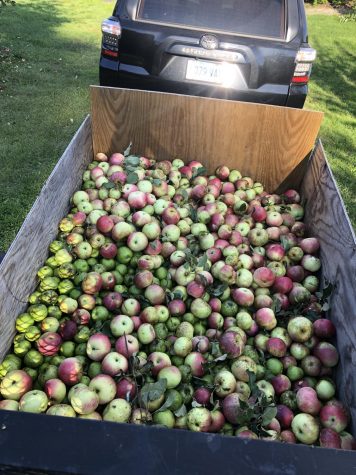Inside the Art of Cider Making
November 2, 2021

With fall in the air and leaves on the ground, this is the perfect time to relax and take a nice sip of warm apple cider. Yet have you ever wondered what type of work it takes to produce the tangy and crisp autumn delight that many flock to during the chilly fall season? Coming from a family who makes delicious cider, I decided to interview my father to bring insight into how this fall staple is produced.
- How do you make cider?
You collect apples and then you grind them up, and then you press them and collect the juice.
- What is the difference between apple juice and apple cider?
Apple juice is filtered and purified apple cider, and cider is unfiltered with chunks of apple. This leads to a cloudy appearance.
- Do you use certain apples, su
- ch as fallen ones, or such as Golden Delicious?
Historically, they have used fallen apples for cider, but they do not now, for fear of salmonella. We pick apples from diverse types of apple trees for more diverse flavors.
- Where did you learn to make cider?
I taught myself.
- Is there certain equipment needed?
Yes, you need an apple grinder and press, and jugs to collect it in.
- What is the best time of year to make cider?
Early autumn, and late summer, typically when the apples are ripe.

- About how many apples do you need for a gallon?
It depends on the size of the apple. 30 to 45 apples are an educated guess.
- How long does the process take? (Not counting the process of growing the apples)
First, you collect the apples, clean them, grind them, and press them. The process can take up to a day.
- Does the cider, once finished, turn into vinegar after a certain period?
If you leave it unrefrigerated and unpasteurized, it can take about a month for the cider to turn to vinegar. Pasteurized means something is partially sterilized.
